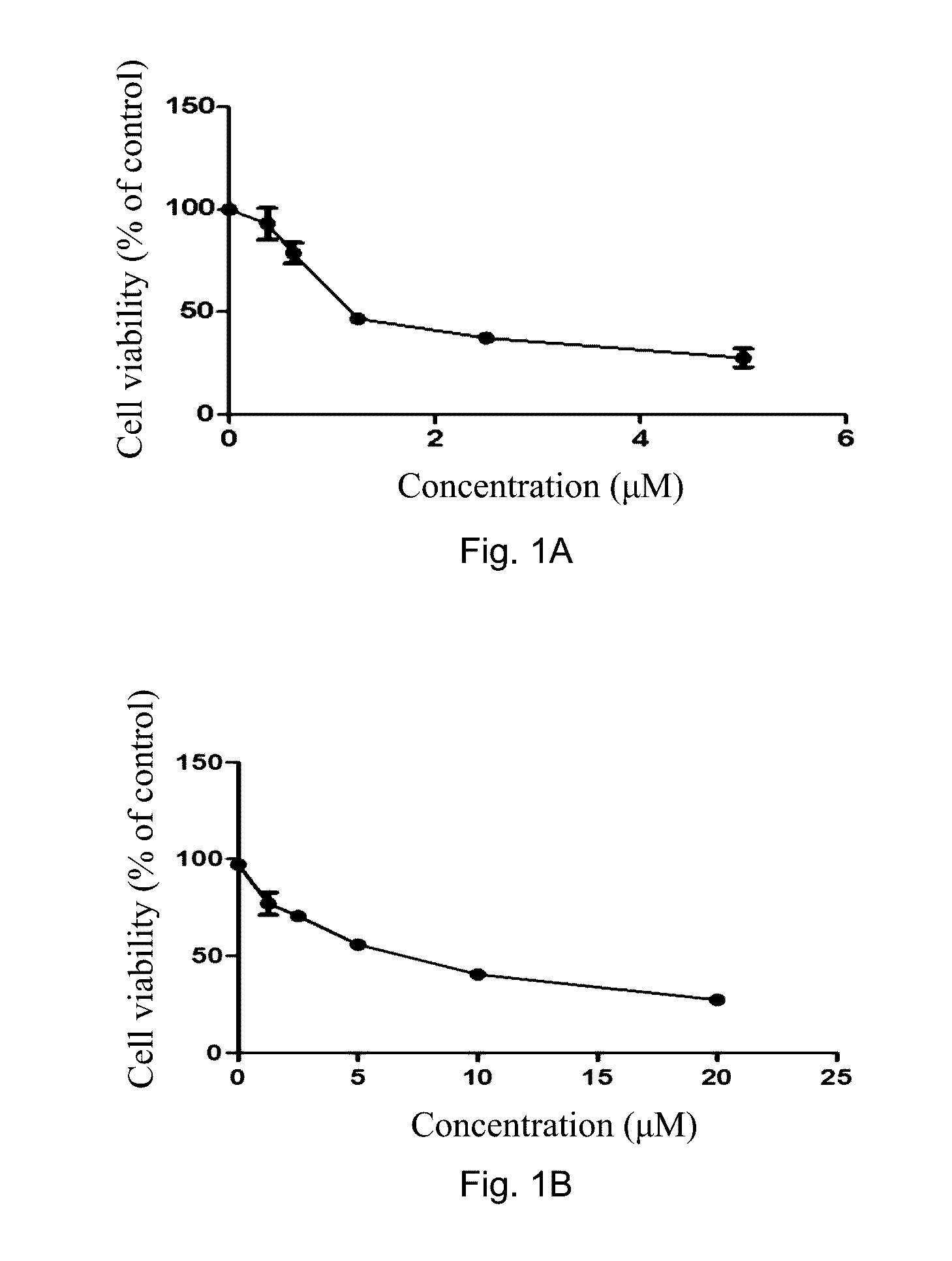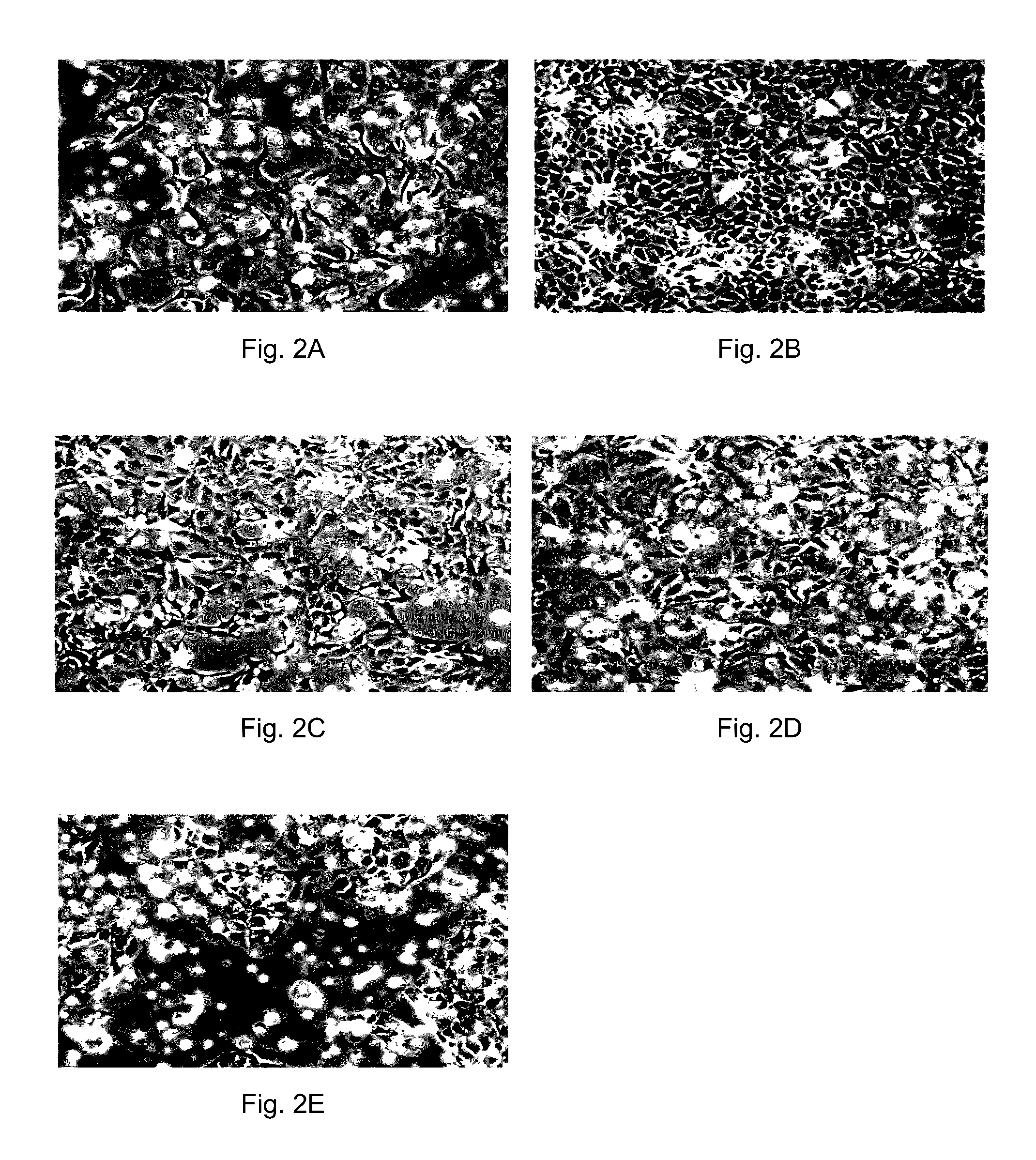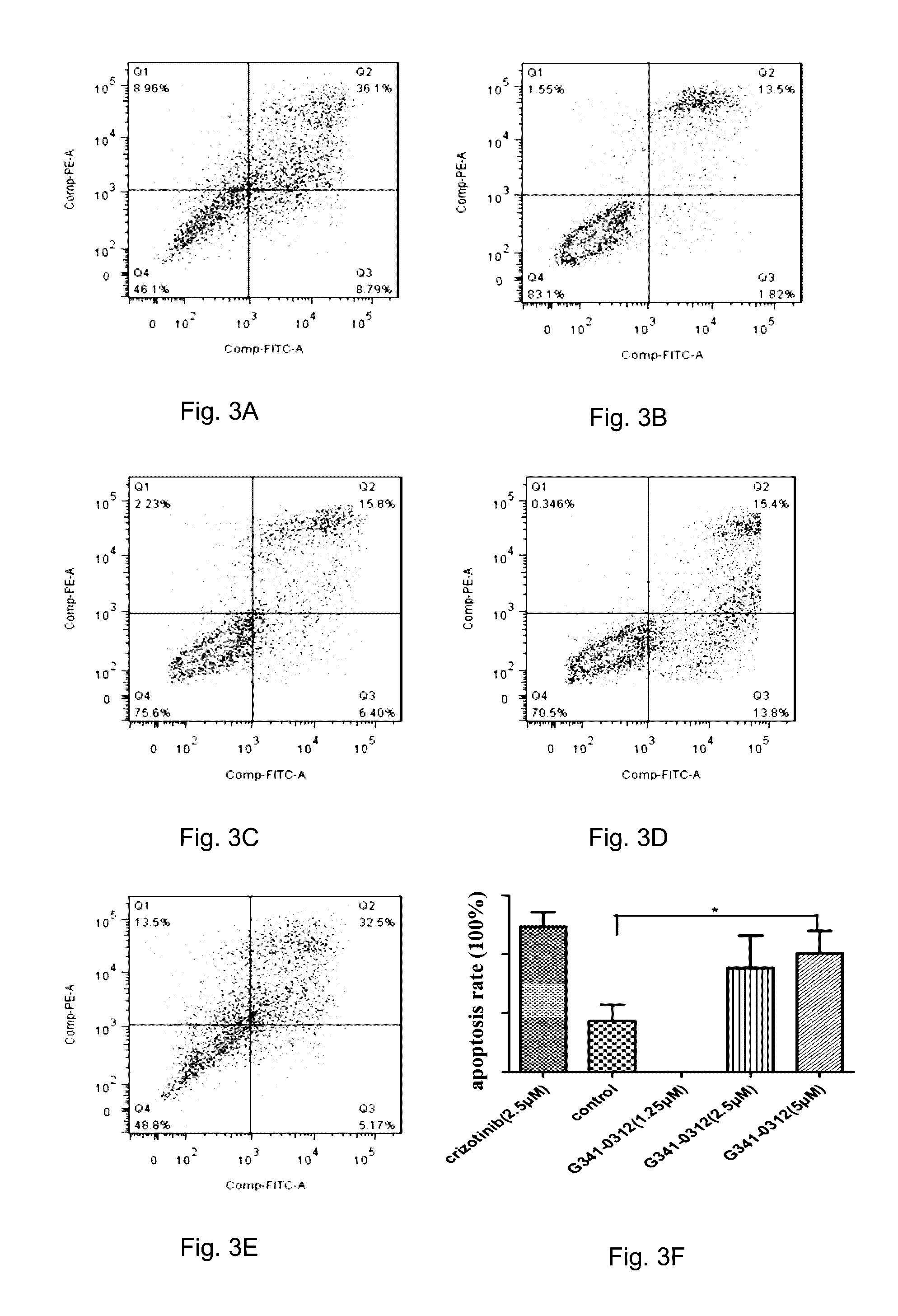Oncogenic ROS1 and ALK kinase inhibitor
a technology of which is applied in the field of oncogenic ros1 and alk kinase inhibitors, can solve the problems of limited efficacy of crizotinib, and achieve the effects of inhibiting ros1 kinase activity, inhibiting alk kinase activity, and reducing the risk of cancer
- Summary
- Abstract
- Description
- Claims
- Application Information
AI Technical Summary
Benefits of technology
Problems solved by technology
Method used
Image
Examples
example 1
Inhibition of ROS1 Kinase
[0109]The efficiency of the compound of Formula (Ic) as inhibitor of ROS1 has been evaluated. First of all, the cytotoxic properties of the compound of Formula (Ic) with regard to cells with ROS1 chromosome rearrangement and its selectivity towards those cancer cells have been analyzed, its efficacy in inducing cell deaths and inhibition of colony formation in those cells as well as the effects on the ROS1 phosphorylation and anti-apoptotic and growth signaling pathways downstream to ROS1. In the below examples, differences are analyzed by one-way ANOVA.
[0110]All statistical analyses are carried out using Graph Prim5.0. Values of P<0.05 were considered statistically significant.
example 1a
Cytotoxic Effects of the Compound of Formula (Ic) Towards Cells with ROS1 Chromosome Rearrangement
[0111]To show the highly cytotoxic and selective properties of the present compound of Formula (Ic), HCC78 NSCLC cells and normal lung epithelial cells (BEAS-2B) were treated with the compound of Formula (Ic) and respective effects were observed. HCC78 NSCLC cells are non-small cell lung cancer cells with a ROS1 gene fusion. HCC78 cells were obtained from the American Type Culture Collection (ATCC) and cultured in environment of 5% CO2 at 37° C. in RPMI-1640 medium supplemented with 10% fetal bovine serum (FBS), 100 units / mL penicillin, and 100 μg / mL streptomycin. The compound of Formula (Ic) was dissolved in DMSO. Using a MTT assay, 3000 HCC78 or BEAS-2B cells were seeded on 96-well plates, cultured overnight for cell adhesion, and treated with DMSO or various concentrations of the compound of Formula (Ic) for 72 h. Three independent tests were performed. 10 μL of MTT (5 mg / mL; Sigma) ...
example 1b
Induction of Apoptosis in HCC78 Cells by the Compound of Formula (Ic)
[0113]The compound of Formula (Ic) of the present invention, as a potent ROS1 inhibitor, proved to induce apoptosis in cancerous cells. Apoptosis assay was performed on HCC78 cells to demonstrate the potent ROS1 inhibitory effect of the present invention. HCC78 cells (1.0×105 cells / well) were allowed to attach to a 6-well plate for 24 h, and the cells were treated with the various concentrations of the compound of Formula (Ic) for additional 72 h. At the end of incubation, the cells were harvested by trypsinization and washed twice with ice-cold PBS. After centrifugation and removal of the supernatants, cell pellets were resuspended in 100 μL 1×Annexin-binding buffer, 2 μL Annexin-V FITC and 2 μL PI (100 μg / ml) were added and incubated in the dark at room temperature for 15 min before further addition of 400 μL of 1×Annexin-binding buffer. The stained cells were analyzed quantitatively using a flow cytometer (BD Bi...
PUM
| Property | Measurement | Unit |
|---|---|---|
| temperature | aaaaa | aaaaa |
| concentrations | aaaaa | aaaaa |
| concentration | aaaaa | aaaaa |
Abstract
Description
Claims
Application Information
 Login to View More
Login to View More - R&D
- Intellectual Property
- Life Sciences
- Materials
- Tech Scout
- Unparalleled Data Quality
- Higher Quality Content
- 60% Fewer Hallucinations
Browse by: Latest US Patents, China's latest patents, Technical Efficacy Thesaurus, Application Domain, Technology Topic, Popular Technical Reports.
© 2025 PatSnap. All rights reserved.Legal|Privacy policy|Modern Slavery Act Transparency Statement|Sitemap|About US| Contact US: help@patsnap.com



